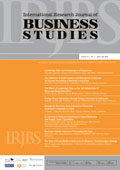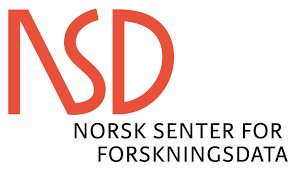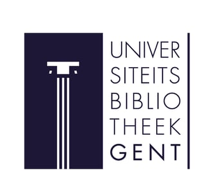Article Metrics |
|
|
Bangladesh RMG Supply Chain Vulnerabilities To Disruption Beyond Covid-19
Abstract
With the recent outbreak of COVID-19, the fragility of the global SC has been revealed. Significant disruption from both the demand and supply side has jolted the garment industry of Bangladesh. This paper aims to foster a more explicit understanding of the disruption vulnerability factors of the Bangladesh RMG SC beyond COVID-19. To achieve the aims, exploratory study methodology is used by extensive literature review. Analysis revealed that Bangladesh RMG SC is vulnerable to hazard, strategic, financial, operational, infrastructural, and demand and supply factors. Natural calamities, infrastructural collusions, labor and political unrest, globally intensified competition, non-compliance issues, high dependency on imported materials, lack of product and market diversification can lead Bangladesh RMG SC to disruptive events. The analysis of this study will help factory owners, industrial managers, and designated authorities to identify vulnerabilities associated with the Bangladesh RMG SC and take measures to reduce the vulnerabilities to disruption.
Full Text:
References
Accord. (2020, October). The Bangladesh Accord on Fire and Building Safety in Bangladesh. https://bangladeshaccord.org/updates/2020/12/14/safety-remediation-progress
Afrah, S. H., & Rani, M. (2018). The Importance of CSR Practices in Business: A Case Study of RMG Sector in Bangladesh. SSRN Electronic Journal. https://doi.org/10.2139/ssrn.3026148
Ahmed, T., Mia, R., Navid Tanjim, M., Azhar Waqar, M., Mahamudul Hasan, M., Das, A., Mojnun Shamim, A., & Jahan, K. (2020). An extensive analysis of the health hazards for RMG workers in apparel sector of Bangladesh. Journal of Textile Engineering & Fashion Technology , 6(04), 141–146. https://doi.org/10.15406/jteft.2020.06.00242
Ali, S. M., Arafin, A., Moktadir, M. A., Rahman, T., & Zahan, N. (2018). Barriers to Reverse Logistics in the Computer Supply Chain Using Interpretive Structural Model. Global Journal of Flexible Systems Management, 19(1), 53–68. https://doi.org/10.1007/s40171-017-0176-2
Anner, M. (2020). Abandoned? The Impact of Covid-19 on Workers and Businesses at the Bottom of Global Garment Supply Chains. In PennSate Center for Global Rights (CGWR).
Anner, M., Bair, J., & Blasi, J. (2013). Toward joint liability supply chains: Addressing the root causes of labor violations in international subcontracting networks. Comparative Labor Law and Policy Journal.
Ansary, M. A., & Barua, U. (2015). Workplace safety compliance of RMG industry in Bangladesh: Structural assessment of RMG factory buildings. In International Journal of Disaster Risk Reduction. https://doi.org/10.1016/j.ijdrr.2015.09.008
APICS. (2016). Supply chain Risk and Reward: Measuring Risk in your Supply Chain. In APICS Insights and Innovations.
Aung, T. T., & Paul, R. (2020, February 28). Asia’s garment industry sees lay-offs, factories closing due to coronavirus | Reuters. Reuters. https://www.reuters.com/article/china-health-textiles/asias-garment-industry-sees-lay-offs-factories-closing-due-to-coronavirus-idUSL3N2AS1OE
Bangladesh Institute of Labour Studies (BILS). (2020). 265 labour movements in RMG sector in 2020. https://tbsnews.net/bangladesh/265-labour-movements-rmg-sector-2020-183178
Blackhurst, J., Dunn, K. S., & Craighead, C. W. (2011). An empirically derived framework of global supply resiliency. Journal of Business Logistics, 32(4). https://doi.org/10.1111/j.0000-0000.2011.01032.x
Blackhurst, J. V., Scheibe, K. P., & Johnson, D. J. (2008). Supplier risk assessment and monitoring for the automotive industry. International Journal of Physical Distribution and Logistics Management. https://doi.org/10.1108/09600030810861215
Blos, M. F., Watanabe, K., Quaddus, M., & Wee, H. M. (2009). Supply chain risk management (SCRM): A case study on the automotive and electronic industries in Brazil. Supply Chain Management: An International Journal, 14(4), 247–252. https://doi.org/10.1108/13598540910970072
Bourantas, D. (1989). Avoiding dependence on suppliers and distributors. Long Range Planning. https://doi.org/10.1016/0024-6301(89)90016-2
Bozarth, C., Handfield, R., & Das, A. (1998). Stages of global sourcing strategy evolution: An exploratory study. Journal of Operations Management. https://doi.org/10.1016/s0272-6963(97)00040-5
Cavinato, J. L. (2004). Supply chain logistics risks: From the back room to the board room. International Journal of Physical Distribution & Logistics Management. https://doi.org/10.1108/09600030410545427
CEBR. (2020). World Economic League Table 2020 - CEBR. https://cebr.com/reports/world-economic-league-table-2020/
Choi, T.-M. (2006). Quick response in fashion supply chains with dual information updating. Journal of Industrial & Management Optimization. https://doi.org/10.3934/jimo.2006.2.255
Choi, T. M. (2007). Pre-season stocking and pricing decisions for fashion retailers with multiple information updating. International Journal of Production Economics. https://doi.org/10.1016/j.ijpe.2006.05.009
Choudhury, S., & Rahman, M. H. (2017). Labor Unrest in the Ready-Made Garment Industry of Bangladesh : Causes and Consequences. European Scientific Journal, ESJ. https://doi.org/10.19044/esj.2017.v13n34p87
Chowdhury, M. M. H., & Quaddus, M. A. (2015). A multiple objective optimization based QFD approach for efficient resilient strategies to mitigate supply chain vulnerabilities: The case of garment industry of Bangladesh. Omega (United Kingdom), 57, 5–21. https://doi.org/10.1016/j.omega.2015.05.016
Chowdhury, N. A., Ali, S. M., Mahtab, Z., Rahman, T., Kabir, G., & Paul, S. K. (2019). A structural model for investigating the driving and dependence power of supply chain risks in the readymade garment industry. Journal of Retailing and Consumer Services, 51, 102–113. https://doi.org/10.1016/j.jretconser.2019.05.024
Christopher, M., & Peck, H. (2004). Building the Resilient Supply Chain. The International Journal of Logistics Management. https://doi.org/10.1108/09574090410700275
Colicchia, C., Dallari, F., & Melacini, M. (2010). Increasing supply chain resilience in a global sourcing context. Production Planning and Control, 21(7), 680–694. https://doi.org/10.1080/09537280903551969
Craighead, C. W., Blackhurst, J., Rungtusanatham, M. J., & Handfield, R. B. (2007). The Severity of Supply Chain Disruptions: Design Characteristics and Mitigation Capabilities. Decision Sciences, 38(1), 131–156. https://doi.org/10.1111/j.1540-5915.2007.00151.x
Dappe, M. H., & Suárez-Alemán, A. (2016). Competitiveness of South Asia’s Container Ports: A Comprehensive Assessment of Performance, Drivers, and Costs | The World Bank. https://doi.org/http://dx.doi.org/10.1596/978-1-4648-0892-0
Das, T., Barua, U., & Ansary, M. A. (2018). Factors Affecting Vulnerability of Ready-Made Garment Factory Buildings in Bangladesh: An Assessment Under Vertical and Earthquake Loads. International Journal of Disaster Risk Science, 9(2), 207–223. https://doi.org/10.1007/s13753-018-0177-6
Dickerson, K. G. (1995). Textiles and apparel in the global economy.
Fattahi, M., Govindan, K., & Keyvanshokooh, E. (2017). Responsive and resilient supply chain network design under operational and disruption risks with delivery lead-time sensitive customers. Transportation Research Part E: Logistics and Transportation Review, 101, 176–200. https://doi.org/10.1016/j.tre.2017.02.004
Gaudenzi, B., & Borghesi, A. (2006). Managing risks in the supply chain using the AHP method. The International Journal of Logistics Management, 17(1), 114–136. https://doi.org/10.1108/09574090610663464
Gereffi, G., & Luo, X. (2015). Risks and Opportunities of Participation in Global Value Chains. Journal of Banking and Financial Economics. https://doi.org/10.7172/2353-6845.jbfe.2015.2.4
Giunipero, L. C., & Eltantawy, R. A. (2004). Securing the upstream supply chain: A risk management approach. International Journal of Physical Distribution and Logistics Management. https://doi.org/10.1108/09600030410567478
Goetschalckx, M., Vidal, C. J., & Dogan, K. (2002). Modeling and design of global logistics systems: A review of integrated strategic and tactical models and design algorithms. European Journal of Operational Research. https://doi.org/10.1016/S0377-2217(02)00142-X
Haider, M. Z. (2007). Competitiveness of the Bangladesh Ready-made Garment Industry in Major International Markets. Asia-Pacific Trade and Investment Review.
Hallikas, J., Puumalainen, K., Vesterinen, T., & Virolainen, V. M. (2005). Risk-based classification of supplier relationships. Journal of Purchasing and Supply Management. https://doi.org/10.1016/j.pursup.2005.10.005
Handfield, R., Sun, H., & Rothenberg, L. (2020). Assessing supply chain risk for apparel production in low cost countries using newsfeed analysis. In Supply Chain Management (Vol. 25, Issue 6, pp. 803–821). https://doi.org/10.1108/SCM-11-2019-0423
Hao, H. (2015). Analysis of seismic pounding between adjacent buildings. Australian Journal of Structural Engineering. https://doi.org/10.1080/13287982.2015.1092684
Hendricks, K. B., & Singhal, V. R. (2003). The effect of supply chain glitches on shareholder wealth. Journal of Operations Management. https://doi.org/10.1016/j.jom.2003.02.003
Hendricks, K. B., & Singhal, V. R. (2005). An empirical analysis of the effect of supply chain disruptions on long-run stock price performance and equity risk of the firm. Production and Operations Management. https://doi.org/10.1111/j.1937-5956.2005.tb00008.x
Herrera Dappe, M., & Suárez-Alemán, A. (2016). Competitiveness of South Asia’s Container Ports: A Comprehensive Assessment of Performance, Drivers, and Costs. In Competitiveness of South Asia’s Container Ports: A Comprehensive Assessment of Performance, Drivers, and Costs. Washington, DC: World Bank. https://doi.org/10.1596/978-1-4648-0892-0
Hibbard, J. D., Kumar, N., & Stern, L. W. (2001). Examining the impact of destructive acts in marketing channel relationships. Journal of Marketing Research. https://doi.org/10.1509/jmkr.38.1.45.18831
HRW. (2015). Workers’ Rights in Bangladesh’s Garment Factories. Human Right Watch. https://www.hrw.org/report/2015/04/22/whoever-raises-their-head-suffers-most/workers-rights-bangladeshs-garment
IBEP. Garments Industry In India: Latest data on Indian Apparel Exports | IBEF. Retrieved January 3, 2021, from https://www.ibef.org/exports/apparel-industry-india.aspx
IFC, & ILO. (2016). Remediation Financing in Bangladesh’s Ready Made Garment Sector. www.ifc.org
ILO. (2020a). A What next for Asian garment production after COVID-19? What next for Asian garment production after COVID-19? www.ilo.org/publns.
ILO. (2020b). ILO brief - The supply chain ripple effect: How COVID-19 is affecting garment workers and factories in Asia and the Pacific.
International Monetary Fund. (2020). World Economic Outlook (October 2020) - Real GDP growth. https://www.imf.org/external/datamapper/NGDP_RPCH@WEO/BGD/CHN/IND/VNM
Islam, A. M., & Deegan, C. (2008). Motivations for an organisation within a developing country to report social responsibility information: Evidence from Bangladesh. Accounting, Auditing and Accountability Journal. https://doi.org/10.1108/09513570810893272
Islam, M., Bagum, M., & Rashed, C. (2012). Operational Disturbances and Their Impact on the Manufacturing Business- An Empirical Study in the RMG Sector of Bangladesh. International Journal of Research in Management & Technology, 2(2), 184–191. http://iracst.org/ijrmt/papers/Vol2no22012/10vol2no2.pdf
Islam, M. S., & Liang, M. G. Q. (2012). Supply chain management on Apparel order process: A case study in Bangladesh garment industry. Asian Journal of Business and Management Sciences, 2(8), 60–72.
Ivanov, D., & Dolgui, A. (2019). Low-Certainty-Need (LCN) supply chains: a new perspective in managing disruption risks and resilience. In International Journal of Production Research. https://doi.org/10.1080/00207543.2018.1521025
Jacobs, B. W., & Singhal, V. R. (2017). The effect of the Rana Plaza disaster on shareholder wealth of retailers: Implications for sourcing strategies and supply chain governance. Journal of Operations Management, 49–51, 52–66. https://doi.org/10.1016/j.jom.2017.01.002
Jüttner, U., & Maklan, S. (2011). Supply chain resilience in the global financial crisis: An empirical study. Supply Chain Management. https://doi.org/10.1108/13598541111139062
Jüttner, U., Peck, H., & Christopher, M. (2003). Supply chain risk management: outlining an agenda for future research. International Journal of Logistics Research and Applications. https://doi.org/10.1080/13675560310001627016
Kader, S., & Md Khairul Akter, M. (2014). ANALYSIS OF THE FACTORS AFFECTING THE LEAD TIME FOR EXPORT OF READYMADE APPARELS FROM BANGLADESH; PROPOSALS FOR STRATEGIC REDUCTION OF LEAD TIME. In European Scientific Journal.
Kleindorfer, P. R., & Saad, G. H. (2005). Managing disruption risks in supply chains. Production and Operations Management. https://doi.org/10.1111/j.1937-5956.2005.tb00009.x
Ko, M. Der, Tu, M., & Ho, T. C. (2017). Supply chain inventory model considering transportation risk and cost. 2017 4th International Conference on Industrial Engineering and Applications, ICIEA 2017, 126–130. https://doi.org/10.1109/IEA.2017.7939192
Lomas, M. Which Asian Country Will Replace China as the ‘World’s Factory’? – The Diplomat. Retrieved January 2, 2021, from https://thediplomat.com/2017/02/which-asian-country-will-replace-china-as-the-worlds-factory/
Lu, S. (2019). Regional Comprehensive Economic Partnership (RCEP): Impact on the Integration of Textile and Apparel Supply Chain in the Asia-Pacific Region (pp. 21–41). Springer, Singapore. https://doi.org/10.1007/978-981-13-2294-5_2
Manik, J. A., & Yardley, J. (2013). Building Collapse in Bangladesh Kills Scores of Garment Workers. The New York Times (Apr. 24, 2013), 1–3.
Morshadul Hasan, M. (2017). Deadly Incidents in Bangladeshi Apparel Industry and Illustrating the Causes and Effects of These Incidents. Journal of Finance and Accounting, 5(5), 193. https://doi.org/10.11648/j.jfa.20170505.13
Nagurney, A., & Yu, M. (2012). Sustainable fashion supply chain management under oligopolistic competition and brand differentiation. International Journal of Production Economics. https://doi.org/10.1016/j.ijpe.2011.02.015
Nguyen, T. (2020, February 3). Fashion Nova, H&M, Zara: Why we can’t stop buying fast fashion - Vox. Vox. https://www.vox.com/the-goods/2020/2/3/21080364/fast-fashion-h-and-m-zara
Nurruzaman, N., Haque, A., & Azad, R. (2016). Is Bangladeshi RMG Sector Fit in the Global Apparel Business? Analyses the Supply Chain Management. The South East Asian Journal of Management. https://doi.org/10.21002/seam.v4i1.5631
Nuruzzaman, & Haque, A. (2009). Lead time management in the garment sector of Bangladesh: An avenues for survival and growth. European Journal of Scientific Research, 33(4), 617–629.
Nuruzzaman, M. (2015). Improving competitiveness in manufacturing-wholesaling-retailing supply chains. Advances in Business Marketing and Purchasing. https://doi.org/10.1108/S1069-096420150000022016
Park-Poaps, H., Bari, M. S., & Sarker, Z. W. (2020). Bangladeshi clothing manufacturers’ technology adoption in the global free trade environment. Journal of Fashion Marketing and Management. https://doi.org/10.1108/JFMM-06-2020-0119
Paton, E. (2020, May 8). Garment Workers in Unions Fear For Their Jobs - The New York Times. The New York Times. https://www.nytimes.com/2020/05/08/fashion/coronavirus-garment-workers-asia-unions.html
Ponomarov, S. Y., & Holcomb, M. C. (2009). Understanding the concept of supply chain resilience. The International Journal of Logistics Management, 20(1), 124–143. https://doi.org/10.1108/09574090910954873
Quadir, S. (2019, September 3). No Title. Reuters, European fashion brands agree new deal in Banglade. https://fr.reuters.com/article/uk-bangladesh-garments-accord-idUKKCN1VO21W
Rahman, M. (2020). RCEP Agreement: Why it should concern Bangladesh? The Daily Star. https://www.thedailystar.net/business/news/rcep-agreement-why-it-should-concern-bangladesh-1995081
Rahman, M., Bhattacharya, D., & Moazzem, K. G. (2008). Bangladesh Apparel Sector in Post MFA Era: A Study on the Ongoing Restructuring Process.
RMG workers demo for 3rd consecutive day in Gazipur | Dhaka Tribune. (n.d.). Retrieved January 1, 2021, from https://www.dhakatribune.com/bangladesh/2020/12/26/rmg-workers-demo-for-3rd-consecutive-day-in-gazipur
Roehrich, J. K., Grosvold, J., & Hoejmose, S. U. (2014). Reputational risks and sustainable supply chain management: Decision making under bounded rationality. International Journal of Operations and Production Management, 34(5), 695–719. https://doi.org/10.1108/IJOPM-10-2012-0449
Roy, R. (2020). Determinants of labor unrest in the Bangladesh readymade garments industry. International Journal of Advanced Engineering Research and Science, 7(5), 22–29. https://doi.org/10.22161/ijaers.75.4
Saxena, S. B. (2014). Made in Bangladesh, Cambodia, and Sri Lanka: The Labor Behind the Global Garments and Textiles Industries. New York: Cambria Press. https://www.cambriapress.com/cambriapress.cfm?template=4&bid=597
Schmitt, A. J., Sun, S. A., Snyder, L. V., & Shen, Z. J. M. (2015). Centralization versus decentralization: Risk pooling, risk diversification, and supply chain disruptions. Omega (United Kingdom). https://doi.org/10.1016/j.omega.2014.06.002
Sheffi, Y. (2001). Supply Chain Management under the Threat of International Terrorism. The International Journal of Logistics Management, 12(2), 1–11. https://doi.org/10.1108/09574090110806262
Sheffi, Y. (2005). The Resilient Enterprise: Overcoming Vulnerability for Competitive Advantage. The MIT Press.
Sheffi, Y. (2015). The power of resilience : how the best companies
manage the unexpected. The MIT Press.
Sheffi, Y., & Rice, J. B. (2005). A supply chain view of the resilient enterprise. MIT Sloan Management Review, 47(1).
Shen, B., Gu, Q., & Yang, Y. (2019). Springer Series in Fashion Business Fashion Supply Chain Management in Asia: Concepts, Models, and Cases. http://www.springer.com/series/15202
Siddiqui, M. (2020). Cotton import from US: Revoking the provision of double fumigation. The Financial Express. https://www.thefinancialexpress.com.bd/views/views/cotton-import-from-us-revoking-the-provision-of-double-fumigation-1579446165
Stanczyk, A., Foerstl, K., Busse, C., & Blome, C. (2015). Global sourcing decision-making processes: Politics, intuition, and procedural rationality. Journal of Business Logistics. https://doi.org/10.1111/jbl.12090
Steckler, M. S., Mondal, D. R., Akhter, S. H., Seeber, L., Feng, L., Gale, J., Hill, E. M., & Howe, M. (2016). Locked and loading megathrust linked to active subduction beneath the Indo-Burman Ranges. Nature Geoscience, 9(8), 615–618. https://doi.org/10.1038/ngeo2760
Svensson, G. (2000). A conceptual framework for the analysis of vulnerability in supply chains. International Journal of Physical Distribution & Logistics Management. https://doi.org/10.1108/09600030010351444
Svensson, G. (2004). Vulnerability in business relationships: The gap between dependence and trust. In Journal of Business and Industrial Marketing. https://doi.org/10.1108/08858620410564418
Tang, C., & Tomlin, B. (2008). The power of flexibility for mitigating supply chain risks. International Journal of Production Economics, 116(1), 12–27. https://doi.org/10.1016/j.ijpe.2008.07.008
The World Bank. (2018). Country Score Card: Bangladesh 2018 | Logistics Performance Index. https://lpi.worldbank.org/international/scorecard/radar/254/C/BGD/2018/C/CHN/2018/C/VNM/2018/C/IND/2018
Uddin, M. (2019). Reducing the environmental impact of RMG industry | Daily Star. https://www.thedailystar.net/opinion/environment/news/reducing-the-environmental-impact-rmg-industry-1738618
UNCTAD. (2019). Review of Maritime Transport 2019 - Chapter 3. https://unctad.org/system/files/official-document/rmt2019ch3_en.pdf
Vural, C. A. (2019). Sustainability Issues in Asian Fashion Supply Chains: Retailers Versus Suppliers. https://doi.org/10.1007/978-981-13-2294-5_3
Wadud, Z., & Huda, F. Y. (2017). Fire Safety in the Readymade Garment Sector in Bangladesh: Structural Inadequacy Versus Management Deficiency. Fire Technology, 53(2), 793–814. https://doi.org/10.1007/s10694-016-0599-x
Wagner, S. M., & Bode, C. (2006). An empirical investigation into supply chain vulnerability. Journal of Purchasing and Supply Management. https://doi.org/10.1016/j.pursup.2007.01.004
Wong, C. Y., McFarlane, D., Zaharudin, A. A., & Agarwal, V. (2002). The intelligent product driven supply chain. Proceedings of the IEEE International Conference on Systems, Man and Cybernetics. https://doi.org/10.1109/icsmc.2002.1173319
World Bank. (2018). Bangladesh Disaster Risk and Climate Resilience Program - Bangladesh | ReliefWeb. https://reliefweb.int/report/bangladesh/bangladesh-disaster-risk-and-climate-resilience-program
World Economic Forum. (2019). The Global Competitiveness Report.
WTO. (2018). World Trade Report. In World Trade Organization.
WTO. (2020). World Trade Statistical Review 2020. World Trade Organization.
Wu, T., Blackhurst, J., & Chidambaram, V. (2006). A model for inbound supply risk analysis. Computers in Industry. https://doi.org/10.1016/j.compind.2005.11.001
Wu, Y. C. J., & Goh, M. (2010). Container port efficiency in emerging and more advanced markets. Transportation Research Part E: Logistics and Transportation Review, 46(6), 1030–1042. https://doi.org/10.1016/j.tre.2010.01.002
Yan, B., Jin, Z., Liu, Y., & Yang, J. (2018). Decision on risk-averse dual-channel supply chain under demand disruption. Communications in Nonlinear Science and Numerical Simulation, 55, 206–224. https://doi.org/10.1016/j.cnsns.2017.07.003
Zahir, S., & Ali, S. (2020, August 31). Assessing Bangladesh RMG’s International Competitiveness. https://www.lightcastlebd.com/insights/2020/08/31/the-fashion-war-that-matters-assessing-bangladesh-rmgs-international-competitiveness
Copyright (c) 2022 INTERNATIONAL RESEARCH JOURNAL OF BUSINESS STUDIES
International Research Journal of Business Studies has been covered by the following services: | ||||||||||||||||||||||||
|




















